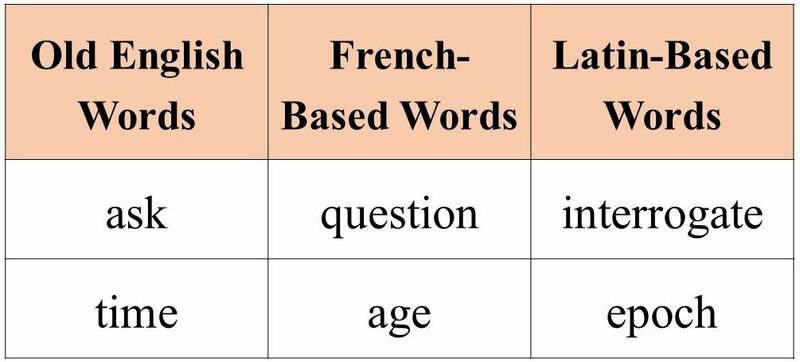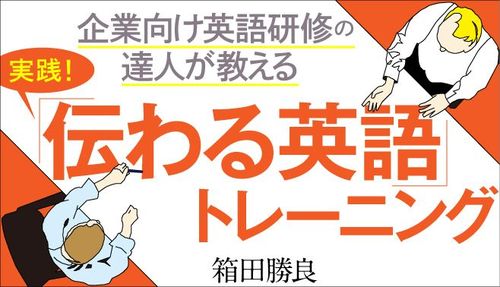
The following article is based on the online series, "Jissen! Tsutawaru Eigo Training" by Katsuyoshi Hakoda (Instructor and Coordinator of English Language Education, AEON). Click here to read the original article in Japanese.
Have you ever heard of the expression, “Shokuyoku no Aki” (The Season of Appetite)? That’s right, fall is upon us! Or should we be saying autumn? The words fall and autumn are pretty much interchangeable, and we often just chalk it up to regional differences—fall is commonly used in the U.S. while autumn is predominantly a British thing. But why is fall/autumn the only season to go by two different names? Hakoda-sensei takes a deep dive into the origins of seasonal names.
Neither Fall nor Autumn
Before adopting the names “fall” and “autumn”, this post-summer/pre-winter season went by a different label: “harvest”, or “haefest”, as the Anglo-Saxons used to say. And this makes all the sense in the world. This was, after all, the season for gathering agricultural crops.
It was around the 14th century that the word “autumn” entered the English lexicon. “Autumn” comes from the French word “autompne”, which was taken from the Latin word “autumnus”. While it is still unclear why “autumnus” was used to refer to the season in the first place, some etymologists theorize that the word “autumnus” was actually taken from the word “auctumnus”, which means ‘to increase’. In other words, “the season of increased crops”. Perhaps Japan’s “Season of Appetite” shares a similar origin story.
The word “autumn” eventually overtook “harvest” in popular use. That is, until the expression “fall of the leaf” enters the fray in the 16th century. This expression continued to be used in reference to the season, and by the 17th century, “fall of the leaf” was abbreviated into its present form: fall.
By the 18th century, “harvest” was no longer being used to refer to the season, and so the people were left with only two choices: the food-centric “autumn” and the artsy expression of “fall”.
It was during this time that the British sailed across the Atlantic to the Americas, bringing both “fall” and “autumn” with them. Historical records show that the word “autumn” was more commonly used during the colonial area, with the word “fall” not appearing in dictionaries until the middle of the 18th century. But over time, the use of “fall” gained traction, eventually overtaking “autumn” as the number one option. It’s still uncertain why this lexical shift occurred. We can only assume that early Americans eventually grew out of their hunger phase and began to develop a taste for the arts.
Meanwhile, in the motherland of Great Britain, word got around that “fall” was being popularized in the U.S. It is theorized that this popularity of “fall” in the U.S. may have had an influence on the British’s choice of “autumn” as their de facto word for the season. Petty intercontinental feuds aside, present-day people in the U.K. mostly stick to “autumn”, so the notion that “fall” is American English and “autumn” is British English isn’t wrong. However, both “fall” and “autumn” were originally British words that were exported to the U.S. at around the same time.
French, Latin, and Greek-Based Words
Old English is the language of the Anglo-Saxons used until around the 11th century. By this point, there were already Latin and French-based words integrated into the English language. Still, most of Old English had its roots in Germanic languages. After the invasion and occupation of England by the army of Norman, we start to see a wave of French-based words seeping into the English vocabulary.
During this era, language use was reflected in social hierarchy. The upper class spoke Norman French while the middle and lower class used Germanic words. Traces of this period of history remain in the meat that we eat. “Cow”, “pig”, and “deer” are Germanic while “beef”, “pork”, and “venison” are Norman French.
The theory is that the Anglo-Saxons who raised the animals in the field used the Germanic names, but the people who cooked and served the meat used the Norman French names since that was the language spoken by the nobles who were feasting on the meat.
As Britain enters the Renaissance period, we begin to see more and more words borrowed from Latin or Greek languages. Many of these loan words would ultimately replace and eradicate its Old English counterparts. But the more resilient ones managed to survive by tweaking its meaning ever so slightly and retaining its purpose in the English language.
Take a look at some of these examples:

Germanic-based Old English words tend to be short, simple, and staccato. In contrast, French-based words have a sense of fluidity to them. Latin-based words sound brainy but a bit unyielding.
A similar amalgamation of words is occurring in the Japanese language as well. Words born in Japan became fused together with words imported from nearby China. More recently, the influence of English and European languages have given rise to katakana loan words. This can be seen in words like 市場 “ichiba” (Japanese), 市場 “shijyou” (Chinese-based), and マーケット market (English loan word) which all have very different sounds but the same exact meaning.
Going back to the origins of seasonal names, the word “fall” is derived from the Anglo-Saxon word “feallan”. It’s interesting that “fall” has practically become an extinct word in the U.K. “Autumn” is a French-based word while the names of the other three seasons retain their Germanic roots. If only the British had gone with “fall”, we could have had a more unified naming system of the four seasons.
Winter / Summer / Spring
While we’re on the subject, let’s take a look at the etymology of the other three seasons: winter, summer and spring.
Back in the olden days, Anglo-Saxons didn’t have a concept of the four seasons. Instead, they used winter to mark the end of the year. In other words, their calendar was based on harvesting crops, and overcoming the harshness of winter was their final test of the year.
The word “winter” is based on the German word “wintruz”, which was itself based off of the Proto-Indo-European word “wed-“ (wet, water-based). Traces of this can still be seen in words such as “wet”, “water” and “wash”. The harsh, frigid temperatures of this season came to be associated closely with wetness and water, hence “winter” was born.
With the formation of “winter”, it only made sense to identify the antithesis of this cold, harsh season. This concept led to the recognition of the summer season. “Summer” comes from the Old English word “sumor”. Tracking its origins even further, we find that “sumor” is in the same word family as the Sanskrit word “sama” (half a year). The name “summer” was created to reflect the opposite end of winter and it has appropriately been labeled “the anti-winter”. Imagine if Britain had unbearably hot summers. Perhaps it would have adopted a more dynamic name.
“Spring” comes from the Old English word “lencten”, which eventually became “Lenten” or “lent”. “Lencten” even has a connection to the word “long”. Some etymologists theorize that the suffix “–ten” points to the word “day”. Put all of this together and you’ve got the label for the season with the “longest day” of the year. The word “lent” was also used in Christianity to indicate the 40 weekdays from Ash Wednesday to Easter as a period of penitence and fasting.
In the 14th century, the term “springing time” popped up into the English lexicon. This “spring” was derived from the act of darting forward or shooting up as seen in the sudden sprouting of plant life. It has essentially been coined, “the budding season.” “Spring” also defines a stream formed naturally from the earth, and this too has its roots in the forward flow of water. Since “springing time” was a bit of a mouthful, it was eventually shortened to “spring”.
Other variations of the seasonal term for spring had also existed around this time: the Latin variant “ver” (green) and the Old English word “primetemps” (new time). However, by the 17th century, only the word “spring” had managed to stick around.
So to summarize, we have spring (“the budding season”), summer (“the anti-winter season”), autumn (“the harvest season”) or fall (“the season of falling leaves”), and winter (“the cold season”).
Reverse Import of Fall
Japan does not observe Daylight Saving Time (or ‘Summer Time’ for those in the U.K., EU, and others), the synchronous advancing of clocks by one hour to increase daylight hours. But did you know that during the post WWII Allied Occupation from 1948 to 1951, Daylight Saving Time was enacted right here in Japan? DST in the U.S. begins on the second Sunday of March and lasts until the first Sunday of November. In the U.K., it begins on the last Sunday of March and runs to the last Sunday of October.
Even for those who’ve grown up with DST, setting and resetting clocks can take some getting used to. In the U.S., the phrase “Spring forward, fall back” was used to keep track of this semi-annual task. Using this phrase, Americans were reminded to “spring” their watches forward one hour in the spring (when DST begins), and “fall” back by one hour in the fall (when DST ends).
This clever mnemonic device was so effective that from the 1970s, “Spring forward, fall back” became widely used in the U.K. as well. So the word “fall”, which was originally born in Britain, made its way to the U.S., subsequently shunned by the British, and ultimately found its way home to the U.K. centuries later. It seems that over time, everything ends up ‘fall’-ing back into place.

